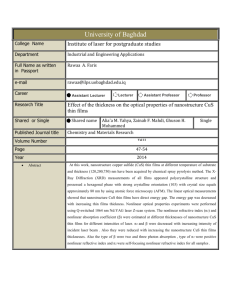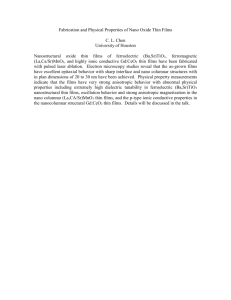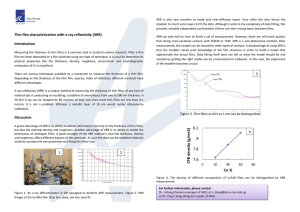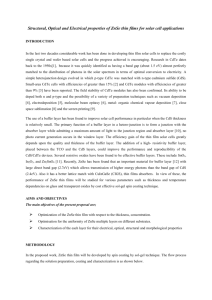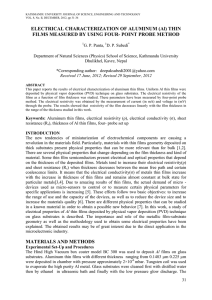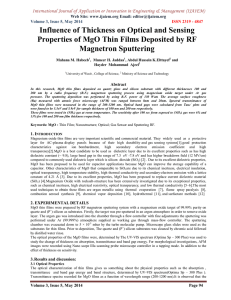APP_39048_sm_SuppInfo
advertisement
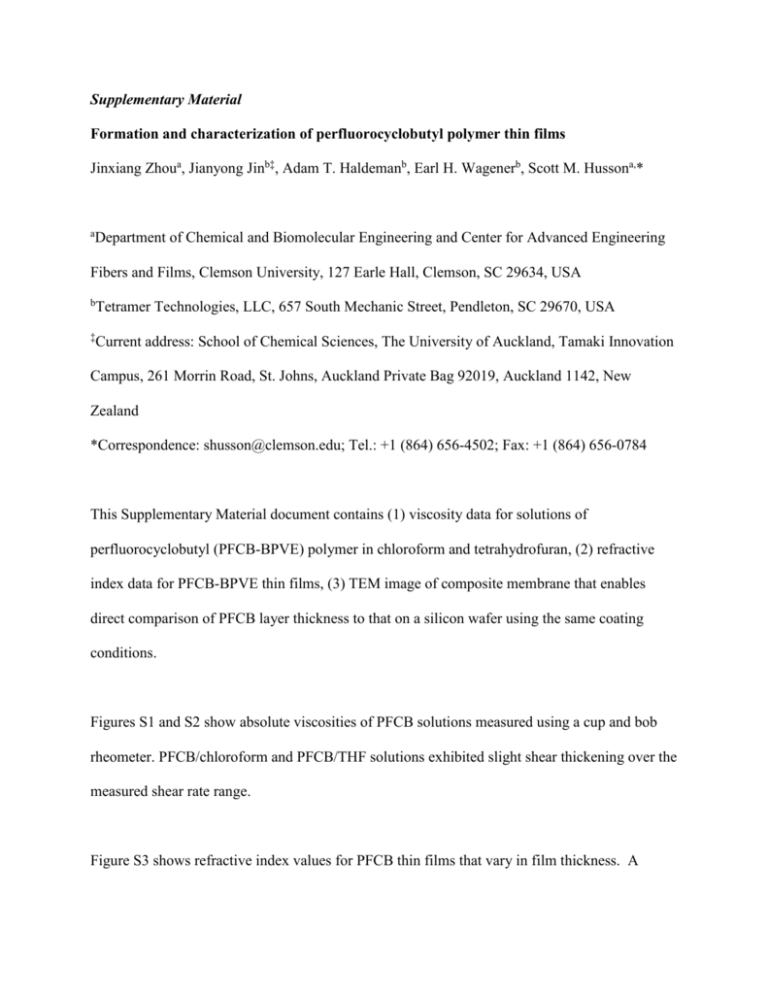
Supplementary Material Formation and characterization of perfluorocyclobutyl polymer thin films Jinxiang Zhoua, Jianyong Jinb‡, Adam T. Haldemanb, Earl H. Wagenerb, Scott M. Hussona,* a Department of Chemical and Biomolecular Engineering and Center for Advanced Engineering Fibers and Films, Clemson University, 127 Earle Hall, Clemson, SC 29634, USA b Tetramer Technologies, LLC, 657 South Mechanic Street, Pendleton, SC 29670, USA ‡ Current address: School of Chemical Sciences, The University of Auckland, Tamaki Innovation Campus, 261 Morrin Road, St. Johns, Auckland Private Bag 92019, Auckland 1142, New Zealand *Correspondence: shusson@clemson.edu; Tel.: +1 (864) 656-4502; Fax: +1 (864) 656-0784 This Supplementary Material document contains (1) viscosity data for solutions of perfluorocyclobutyl (PFCB-BPVE) polymer in chloroform and tetrahydrofuran, (2) refractive index data for PFCB-BPVE thin films, (3) TEM image of composite membrane that enables direct comparison of PFCB layer thickness to that on a silicon wafer using the same coating conditions. Figures S1 and S2 show absolute viscosities of PFCB solutions measured using a cup and bob rheometer. PFCB/chloroform and PFCB/THF solutions exhibited slight shear thickening over the measured shear rate range. Figure S3 shows refractive index values for PFCB thin films that vary in film thickness. A significant difference was found between RI values measured at the two endpoint incidence angles of 56° and 80°, indicates anisotropic properties of PFCB thin films below about 50 nm. Figure S4 shows a TEM image of a PFCB thin-film composite membrane cross section. The dark region represents the PFCB layer, which has a thickness of about 100 nm. The solution used for coating was 1.5 wt% PFCB in chloroform, and coating was done at a dip coating withdrawal speed of 210 mm/min. By comparison, the PFCB film thickness measured on silicon wafer using the exact same conditions was measured by ellipsometry to be 91 ± 5 nm. The uncertainty represents standard deviation among five measurement points. Figure S1. Viscosity measurements for PFCB/chloroform solutions. Triangles, squares and diamonds represent 1.00 wt %, 0.50 wt % and 0.25 wt % bulk PFCB concentrations. Figure S2. Viscosity measurements for PFCB/THF solutions. Triangles, squares and diamonds represent 1.00 wt %, 0.50 wt % and 0.25 wt % bulk PFCB concentrations, respectively. Figure S3. Refractive index of PFCB thin films measured by ellipsometry at 80° (squares) and 56° (diamonds). Figure S4. TEM image of a PFCB thin-film composite membrane cross section. The dark region represents the PFCB layer, which has a thickness of about 100 nm.



